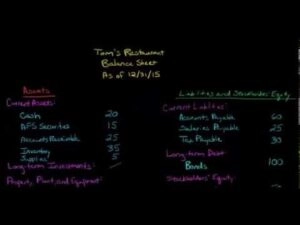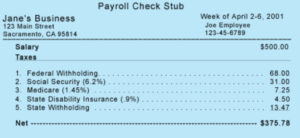
Changes can unbalance your accounts and other reconciliations. It also affects the beginning balance understanding financial statements of your next reconciliation. Now, simply compare the transactions on your statement with what’s in QuickBooks. The tricky part is making sure you have the right dates and transactions in QuickBooks so you know everything matches. It streamlines the reconciliation process, allowing for the identification and resolution of discrepancies more effectively. Most business owners are used to carrying out frequent account reconciliations.
Match your transactions
Entering the ending balance in QuickBooks Online is a crucial step in the reconciliation process, ensuring that the financial records align the best ways to prevent overdue accounts receivable and accounts payable free essay sample with the closing balance of the bank statement. Reconciling in QuickBooks Online involves several key steps to ensure that the financial records align with the bank statement and reflect accurate transactional data. From accessing the reconcile tool to marking transactions as cleared, we’ve got you covered. We’ll delve into reconciling previous months, rereconciliation, and marking transactions as reconciled in QuickBooks Online. If you’re ready to streamline your reconciliation process and gain a deeper understanding of how to reconcile in QuickBooks, read on to become a reconciliation pro. If you reconciled a transaction by mistake, here’s how to unreconcile it.
Reconciling an account you didn’t enter an opening balance for
Reviewing transactions in QuickBooks Online is essential to identify any discrepancies and ensure that the recorded transactions correspond accurately with the bank statement. This helps to verify the accuracy of the recorded transactions and identify any discrepancies between the company’s books and the actual bank statement. Accessing the reconcile tool in QuickBooks Online is the initial step in the reconciliation process, allowing users to review and match the financial records with the bank statement. Through careful adjustments and verifications, the reconciliation process aims to provide a clear understanding of a company’s financial position. This meticulous approach helps in identifying and rectifying any irregularities, supporting informed decision-making and financial transparency.
Review Transactions
It entails reviewing each transaction, comparing it with the corresponding bank statement entry, and making any necessary adjustments to ensure the accuracy of the records. This crucial process begins with gathering the bank statements and transactions from the relevant accounts. Once the data is collected, the next step is to compare the transactions recorded in QuickBooks with those listed in the bank statements, addressing any discrepancies. Adjustments may be necessary to rectify any inconsistencies and ensure that the financial records accurately reflect the actual bank activity. Reconciling previous months in QuickBooks Online involves the process of retroactively matching the financial records with the bank statements for specific past periods to ensure comprehensive financial accuracy.
You need to make sure the amounts match your real-life bank and credit card statements. Rereconciling in QuickBooks involves the process of reviewing and revalidating previous reconciliations to address any discrepancies or updates in the financial records, ensuring ongoing accuracy. It begins with accessing the reconcile window by navigating to the Banking menu and selecting Reconcile. Then, you’ll need to enter the ending balance from your bank statement and the ending date. Next, review the list of transactions, ensuring that each one matches the transactions on your bank statement.

In the realm of modern business, leveraging technology to optimize financial management has become an imperative. QuickBooks, a leading accounting software, stands as a crucial tool in this endeavor. Its advantage lies in its ability to streamline and enhance the account reconciliation process, thereby contributing to the overall financial health of an organization. Let’s delve into the specific advantages that QuickBooks brings to the table. If you need to make changes after you reconcile, start by reviewing a previous reconciliation report. If you reconciled a transaction by accident, here’s how to unreconcile individual transactions.
- Use this guide anytime you need help doing or fixing a reconciliation.
- In the realm of modern business, leveraging technology to optimize financial management has become an imperative.
- This is a time-saving feature that can benefit any business user.
- In this comprehensive guide, we’ll walk you through the step-by-step process of reconciling accounts in QuickBooks, ensuring your financial accuracy and peace of mind.
This validation step is pivotal in maintaining the integrity and accuracy of financial records, enabling businesses to confidently rely on their financial reports for decision-making and compliance purposes. This meticulous process aids in maintaining the integrity of financial data and enables businesses to track their financial health effectively. By cross-referencing the recorded transactions with the bank statement, discrepancies such as missing or duplicate entries can be identified and rectified, ensuring the accuracy of the financial records.
During a reconciliation, you compare an account in the accounting system, such as QuickBooks, to its real-life counterpart to make sure everything matches. A reconciliation confirms the accuracy of the QuickBooks account. (If you’re in the middle of reconciling, stay on the page you’re on and skip to step 4). You’ll want to look at your statement, starting with the first transaction listed and find that same transaction in the Reconciliation window in QuickBooks.
By adjusting transactions, users can ensure that their financial data aligns with the actual bank activity, minimizing errors and 5 symptoms of a bad front or rear differential and repair cost enhancing the overall reliability of the financial statements. In the world of business, financial accuracy is the compass that guides decision-making. QuickBooks, with its intuitive account reconciliation feature, ensures that your financial data remains trustworthy.
